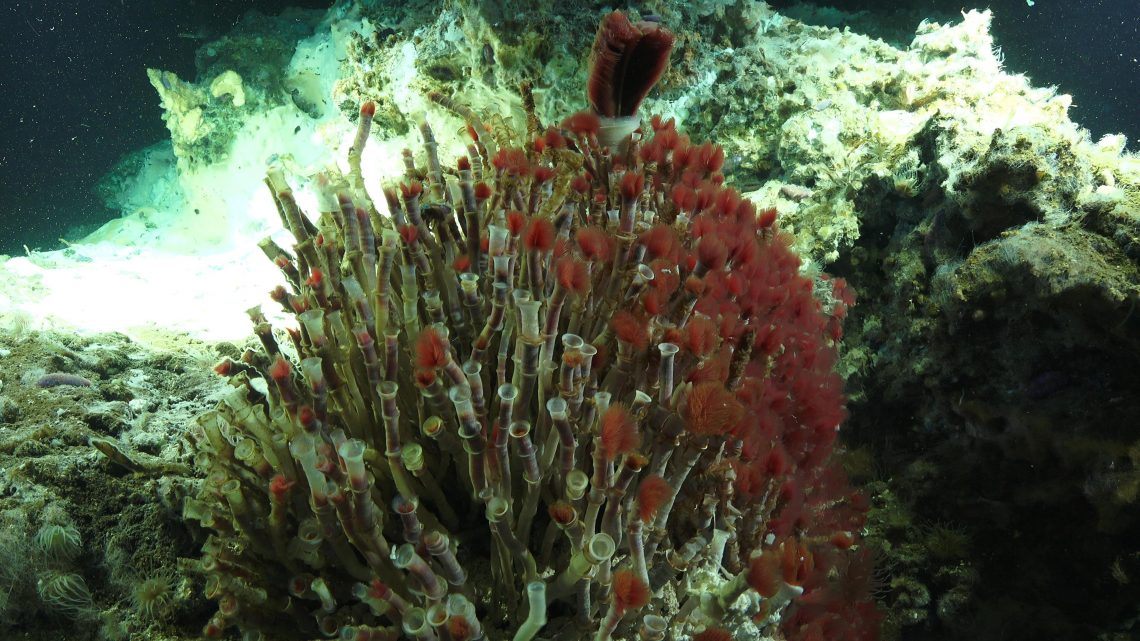Found: Upside-Down Waterfalls, Steaming Mud, and Blue Microbes on the Ocean Floor
An unusual hydrothermal ecosystem erupts in the Gulf of California.

In some places, deep at the very bottom of the ocean, nearly as far out of sight as possible, streams of scalding water burst through openings in the seafloor called hydrothermal vents. Researchers affiliated with the Schmidt Ocean Institute in Palo Alto, California, recently shared what they found in a newly discovered vent field in the Pescadero Basin, on the floor of Mexico’s Gulf of California.
The finds demonstrate just how vibrant and bizarre the invisible, mysterious, and thoroughly unexplored seafloor can be. In a release, the scientists describe “steaming hot sediments laden with orange-colored oil,” microbes that are blue for some unknown reason, and “shimmering” water that lends the vent field its name: Jaich Maa, or “liquid metal” in Kiliwan, an indigenous language of the Baja Peninsula that, according to researchers, may go extinct in just a matter of years.* The researchers report watching this gleaming water spill up from calcite mounds—some of which stretch to more than 80 feet tall—“in an upside-down waterfall” erupting from the ocean floor. The warmest vents in the field, according to a second release, shoot water at a staggering 550 degrees Fahrenheit.

Given the heat and depth, the researchers used several kinds of advanced robots to map and observe the area. First, in a practice known as “mowing the lawn,” the team used an autonomous underwater vehicle to explore a preprogrammed area, says Robert Harris, a geologist and geophysicist at Oregon State University involved with the research. This preliminary exploration helped the scientists find the vents, which they then explored with a remotely operated vehicle that they controlled from a boat on the surface.
Harris says that Jaich Maa is unusual among hydrothermal vent fields in that it does not appear to be associated with “spreading centers,” such as the Mid-Atlantic Ridge, where continental plates break apart and generate new oceanic crust. He is hopeful that, as the team continues to study the still-mysterious system, Jaich Maa can help shed new light on “how continents rift apart,” as the Baja Peninsula slowly drifts to the northwest. There will also be much to learn from the tube worms, sea anemones, and other species living in the vent field—“extremophiles” that inhabit some of the most intense ecosystems on Earth.
* This story was updated on December 20, 2018, to specify the indigenous language the researchers used, and its likely fate.























Follow us on Twitter to get the latest on the world's hidden wonders.
Like us on Facebook to get the latest on the world's hidden wonders.
Follow us on Twitter Like us on Facebook